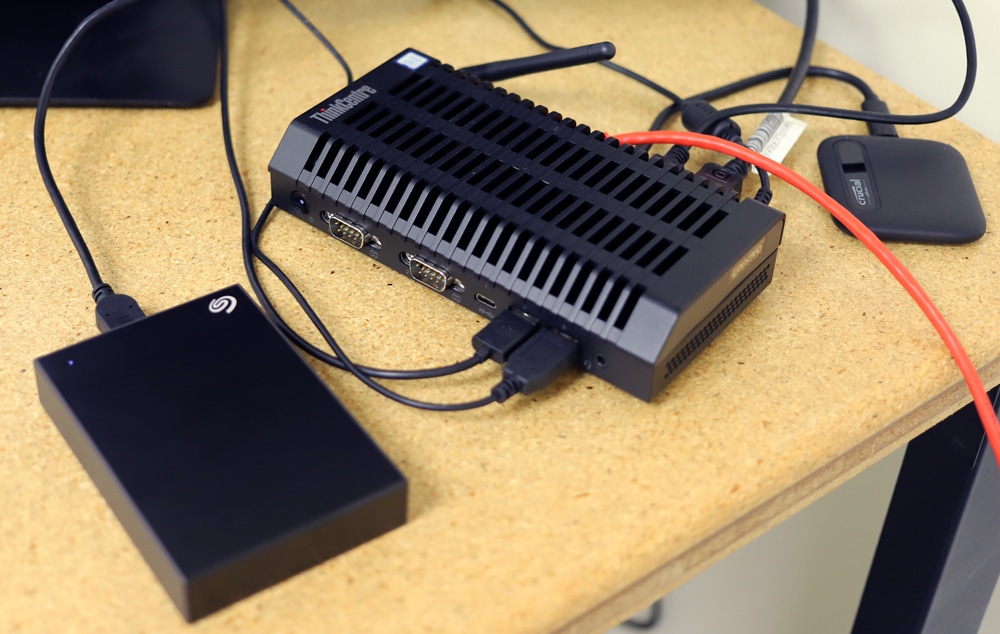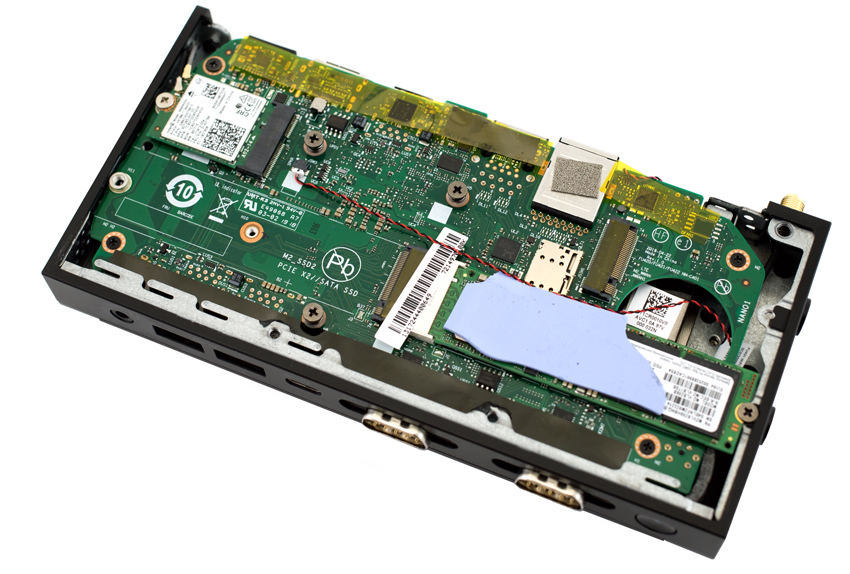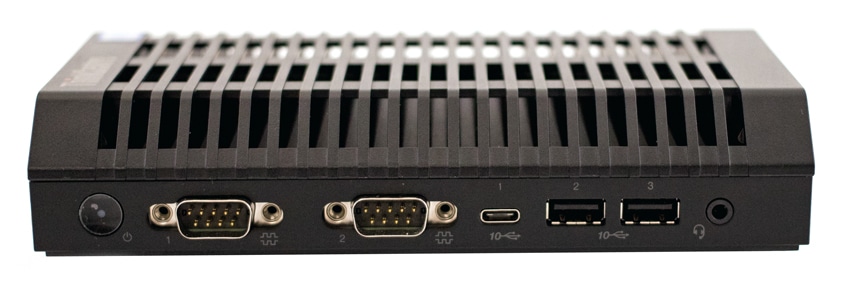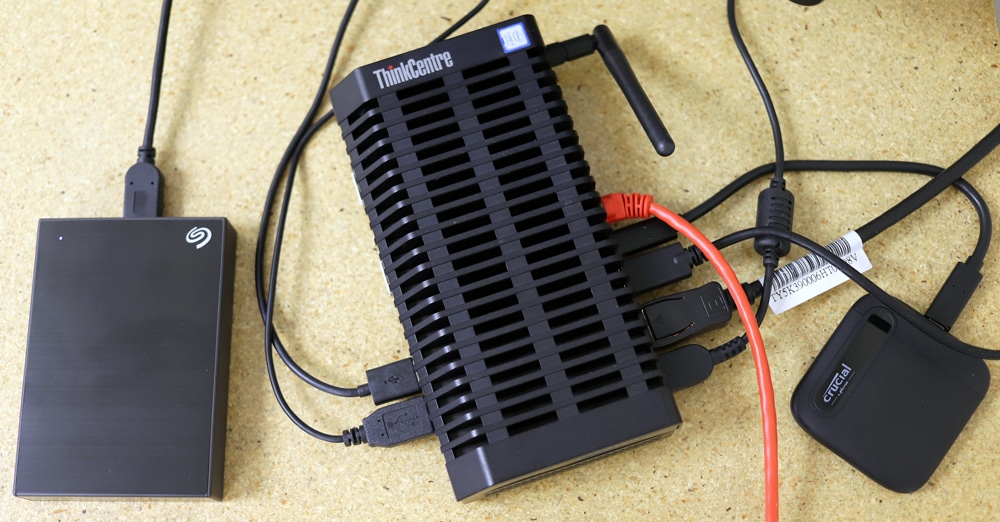There are a lot of ways to farm Chia as it is highly dependent on flash storage and bulk HDD storage, not high-end GPUs and CPUs. We’ve looked at the best budget rig for plotting Chia and the top cheap SSDs for Chia plotting. Farming Chia specifically is less resource-intensive and has people searching for budget Rasberry Pi builds, which can get almost too underpowered. An Intel NUC option is popular, but again can be a bit pricey and often requires assembly. We’ve found one great option that fits between both in terms of price and has some great qualities for budget Chia farming.

Best Budget Chia Farming Rig
Today we are going to show you how to set up Chia on a Lenovo ThinkCentre M90n-1 Nano. A quick background on the Lenovo M90n Nano family. First up, we really like these guys. We tested the IoT one we are using here as well as the straight up M90n, last year. Since then, we have leveraged them as testbeds for smaller consumer devices and created a small, 3-node Proxmox VE cluster with them.
The M90n IoT Nanos are small, still moderately powerful, and relatively inexpensive, you can pick one up for about $350 (there are also some good options refurbished on eBay). The IoT Nano is locked to 4GB of RAM and has a 2-core 2.1GHz Intel CPU in our build. However, there are CPU variations including AMD models across the Nano line.

Similar to the main M90n Nano the IoT version comes with two Gen3 NVMe m.2 slots, as well as two LAN ports. It also comes with ample USB connectivity ports. We like the IoT for this task as well because it’s fanless, which means it won’t make any noise. This makes it a good option for covert Chia farmers, or farmers that otherwise want to be quiet. The Nanos come with Windows too, which makes them easy to deploy or easy to switch to Linux. Lastly, as there are two SSD slots, you could even add another SSD to the system and plot a little, but overall this is best as a farming-centric rig, or Chia harvester, as your case may be.
Lenovo Nano vs. Raspberry Pi vs. Intel NUC
Of course, there are a lot of other budget Chia farming rig options if you have your heart set on farming on a low-power platform. The Raspberry Pi costs less (eBay Raspberry Pi4), but requires assembly and really doesn’t have much power to farm at scale. For a processor it uses a Broadcom BCM2711, Quad-core Cortex-A72 (ARM v8) 64-bit SoC (up to 1.5GHz), it can have 4GB of RAM (or up to 8GB) and has four USB ports. It is one-sixth (though kits cost more) the price of the Nano but doesn’t come with storage (users can add it via microSD card or through the USB ports). The Raspberry Pi also definitely cannot plot Chia with any reasonable efficiency.
Intel NUCs can be another option, but they have different issues. Primary amongst them is they’re often more expensive than the Nano and have less expandability. On the lower end of the cost spectrum, the NUCs are either a kit like just a board, are missing storage, or feature HDDs. In fact, to match the specs of the Lenovo Nano you would be up around the $300 price range for a refurbished NUC and you still wouldn’t have the ports, USB, or dual network.

Compare those to the Nano that runs around $350 and gives users a decent CPU, 4GB of DDR4 RAM, 256GB SSD, and Windows. On the SSD, Lenovo tends to pick nice SSDs for these systems, we’ve seen the Samsung PM981 for instance, which is a more robust version than their consumer line. And there’s the second open bay, which means the Nano can even plot a little if needed.
On top of that, you can have up to 7 USB ports (both type-A and type-C) to hand external storage off of, as well as two RJ45 ports. Overall the ease of deployment and cost per farmable TB makes these systems our pick for best budget Chia farming or harvesting rig.

We’re not saying that Raspberry Pi or NUCs are bad choices. If you already have one it is something you can get started with. We are saying if you are looking to start new, the extra money for the Lenovo ThinkCentre M90n-1 Nano IoT is worth it.
Setting up a Chia Farmer
We have Ubuntu 20.10 installed on the M90n-1. If you are new to installing Chia Blockchain, there is a handy how-to guide that can be found here. The guide tells you what you need in terms of minimum specs for your system, and goes through over six different types of systems. As said, we are using Ubuntu here we used the CLI tool and followed the step-by-step instructions listed on the Chia INSTALL page. The whole process was fairly easy and was completed in less than 10 minutes.
We also set up the GUI for Chia. Again, the process only takes a few minutes and the Github guide offers step-by-step instructions. Once it was all set up, we just had to wait for it to sync. This part is not fast, unfortunately. For storage, we used a Crucial X6 (2TB) for the SSD and a Seagate Backup Plus Portable 5TB for the HDD. These were more just showing what can be connected. As this guy will be a farmer or harvester you, will probably be having almost all hard drive storage connected.
Closing Thoughts

For less than $350 you can set up Chia very easily on a Lenovo ThinkCentre M90n-1 Nano. The IoT Nano is fanless so you can leave it on all the time without it being annoying. To be fair, the fan-equipped Nanos aren’t loud either and get faster CPUs. The Nano has plenty of ports so you can add storage as needed and it can be newer or older storage. These little guys can even plot a little too, which is a nice kicker.
Lenovo Nanos on eBay | New Nano options on Amazon
Read More:
- Our Favorite Chia Plot Migration
- Best Cheap SSDs for Chia Plotting
- Best Budget Chia Plotting Rig
- Keep your Chia Sync Online
- Cooling is critical for chia plotting speed and safe farming




 Amazon
Amazon